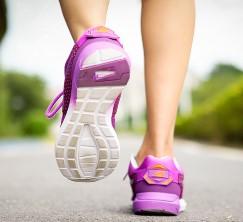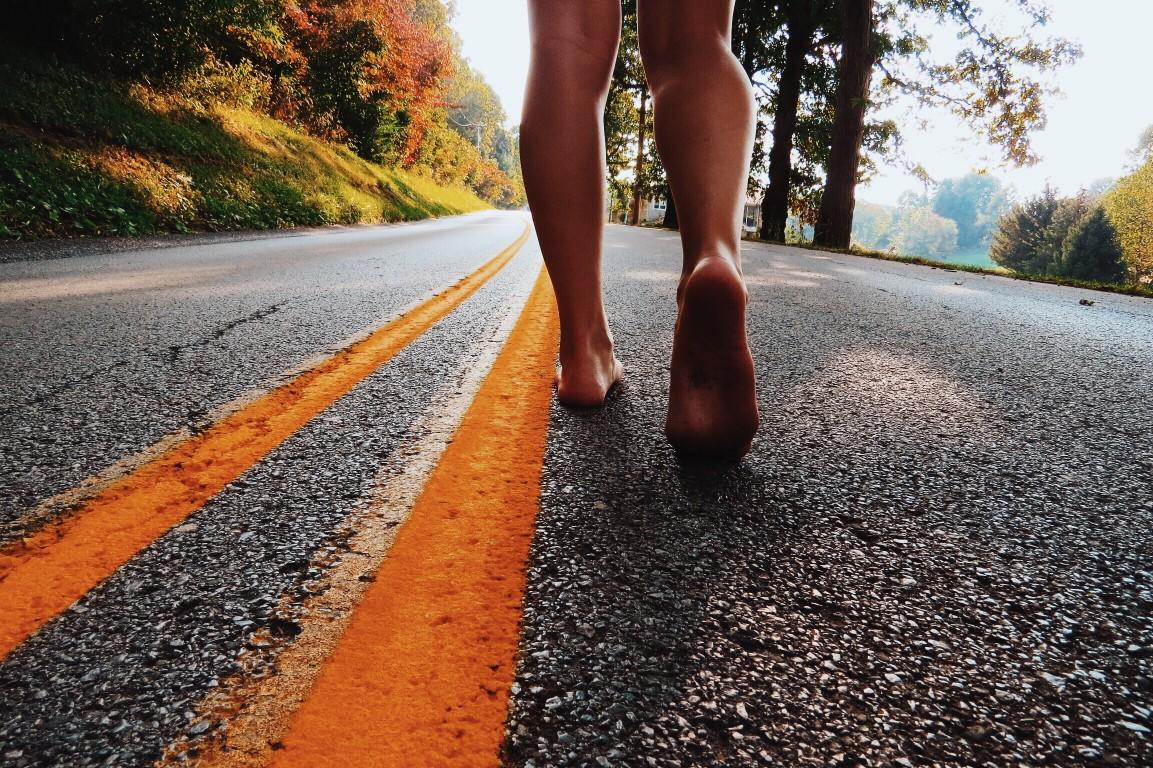Just like any other exercise, walking needs to be done in the correct manner to reap its benefits. There are certain walking styles and techniques that can help a beginner to up their walking game.
Importance of walking technique
A correct walking technique can greatly aid weight loss goals. It increases the efficiency of the walk; and the energy used by the body is effectively utilized.
People may not think about it too much but good posture is an integral component of the walking techniques. An overall accurate posture minimizes the chances of injury. Poor strides can rip leg muscles and lopsided demeanor raises the risk of back and knee pain. A good posture, on the other hand, relaxes
When you walk in a stable manner your body finds it easier to move forward. The increased ease of walking helps you to stride even faster than before.
Plus, an effective walking technique can increase the rate of calorie burn. It strengthens and tones your muscles even faster. Greater muscle mass increases the metabolism rate of the body, even at rest, which further aids the weight loss process.
It is also productive in targeting and destroying the visceral fat around the organs in your body. The importance of an appropriate walking technique cannot be stressed enough. It makes the whole process of walking easier, more enjoyable and inviting for the person.
Different Walking styles
There are various walking styles that people employ in their daily lives. Not all styles may be for everyday walkers but it is good to know the options available. You may want to adopt one that best suits your style and health goals:
Brisk walking
This is the easiest way of walking. Using this technique, a person walks slightly faster than the normal speed. Brisk walking is quite appropriate for beginners with the speed being generally around 5 km/hr.
Power walking
Power walking employs a perfect posture. It is a more efficient way of losing weight and improving your health and fitness. The average speed of a power walk is around 7-9 km/hr. It is believed that power walking may well burn as many calories as jogging. This technique may also suit your needs better if you have knee issues.
Race walking
Race walking is a sport in the Olympics. It requires an extremely high levels of fitness. The main rule is that one foot of the athlete should always touch the ground. This implies that before one foot leaves the ground other should already be in position.
Pole walking
Pole walking is a Nordic practice. This type of walking uses a pair of poles or sticks to walk. The poles are used as a support to push oneself forward during the walk. It helps to engage core muscles and improve balance. It is usually employed during hiking.
Marathon walking
Marathon walking is not very fast. However, it requires a lot of stamina as marathons are usually quite long. You need to practice for a few months before formally walking a marathon.
Chi walking
Chi walking applies the rules of Tai Chi in walking. It is a fivefold approach which includes maintaining perfect posture, effective muscle usage, achieving ultimate balance, weighing options and advancing forward.
Stroller walking
Stroller walking is exactly what the name suggests. A parent pushes their child’s stroller while walking. Its disadvantage is that your hands do not swing while walking. Keeping the hands in the same position can hurt your neck and back.
Benefits of various walking styles
All walking styles build muscles and tone your body. However, some styles are more effective in losing weight and burning calories.
Brisk walking is a good cardio exercise. It also strengthens your leg muscles.
Power and race walking are highly fruitful in building muscles and getting leaner. They help burn calories at a rapid rate.
Pole walking is less abrasive on the joints. It also builds upper body strength by engaging the arms, chest, shoulders and back muscles. It improves the balance of your body as well.
Marathon walking is very good for developing discipline and patience. It builds stamina as well.
Chi walking is an art. It develops the ability to concentrate and pay attention to details. It can be considered more of a meditation.
Stroller walking is very beneficial for parents who do not have spare time to work out. As it requires pushing some weight, it consumes more energy as well.
Recommended Posture
Always remember to check your posture before going for a walk. A simple, yet effective aspect of walking, here is what you need to do:
Stand as tall as you can and align your whole body. Your head, neck, back, knees and feet should be in a straight line, yet you don’t have to make your body rigid and stiff. Instead, keep yourself as relaxed as possible.
Make sure you don’t have an arched back. Protruding buttocks and a large belly can often cause such an arch in the back. In order to avoid this, tuck your pelvis and pull your stomach inwards. Sucking your stomach inwards also engages the core muscles.
Keep your gaze straight ahead. A good option is to look 15 to 20 feet in front of you.
Keep your head straight and stable. Your chin should be parallel to the floor. Make sure you do not subconsciously tilt your chin upwards or downwards. Bending your neck to look down puts a strain on your back. Just lower your gaze slightly if you have to see where you are going. It minimizes undue stress and improves breathing as well.
One very important of correct posture is that the walker’s shoulders should not be tense. They should be relaxed so that the distance between their ears and shoulders is optimum. Also, move your shoulders slightly backward. This prevents shoulder muscles to get sore.
How to perform a power walk
While there are so many walking styles, power walking is definitely one of the most popular ones. Almost everyone can go on a power walk and can get weight loss benefits as well. So coming up, this next bit may sound a little bit technical, but is well worth the read, especially if losing weight is what you are aiming for.
After you have emulated the perfect posture, you can start your power walk.
Warm up your body by walking slowly for a few minutes. You can also do some gymnastic exercises like jumping jacks to get ready for the power walk. Perform pre-walk stretches as well.
When power walking your arms should be bent at a right angle and should be able to move as fluidly as possible. Keeping your arms at an angle prevents any numbness in the fingers and palms. Also, bent arms build and tone muscles and burn more calories. They help increase the pace of your walk as well.
Your arms should swing back and forth at the height of your waist while walking. Keep your hands slightly closed but do not clench your fists. Your elbows should be close to your body during the walk to avoid the ‘chicken walk’.
If your arms get tired initially try to keep them raised for 5-10 minutes and give them rest when worn-out. This way you can gradually build stamina.
The movement of the lower body is the most important part of a power walk. It involves the hips, legs, ankles, and feet.
In a power walk, when you put your leg forward you should land on your heel first. At this point, your foot should be flexed and your toes should point upwards. Then roll your foot forward so that your toe is the last part to leave the ground. When lifting the toes, give a push forward to your body. This will give your body more momentum and help you increase your pace even more.
When walking, make sure that your strides are not very long in the front. Long strides are often associated with knee and muscle injury. To shorten them, the distance between your forward foot and the body center should be small.
Instead of lengthening your steps in the front, try to increase the distance of the back leg from the center of the body. This can be done by keeping your back foot on the ground as long as you can. Such a change in your stride will provide more push to your body.
During a walk alternate the movement of arms and legs so that you can easily walk in a straight line.
Finish off your walk by slowing down to cool off your body. Do some stretching exercises again to release any stiffness in the muscles.
Following the correct techniques of a power walk can help you lose weight and tone your body quite rapidly.



